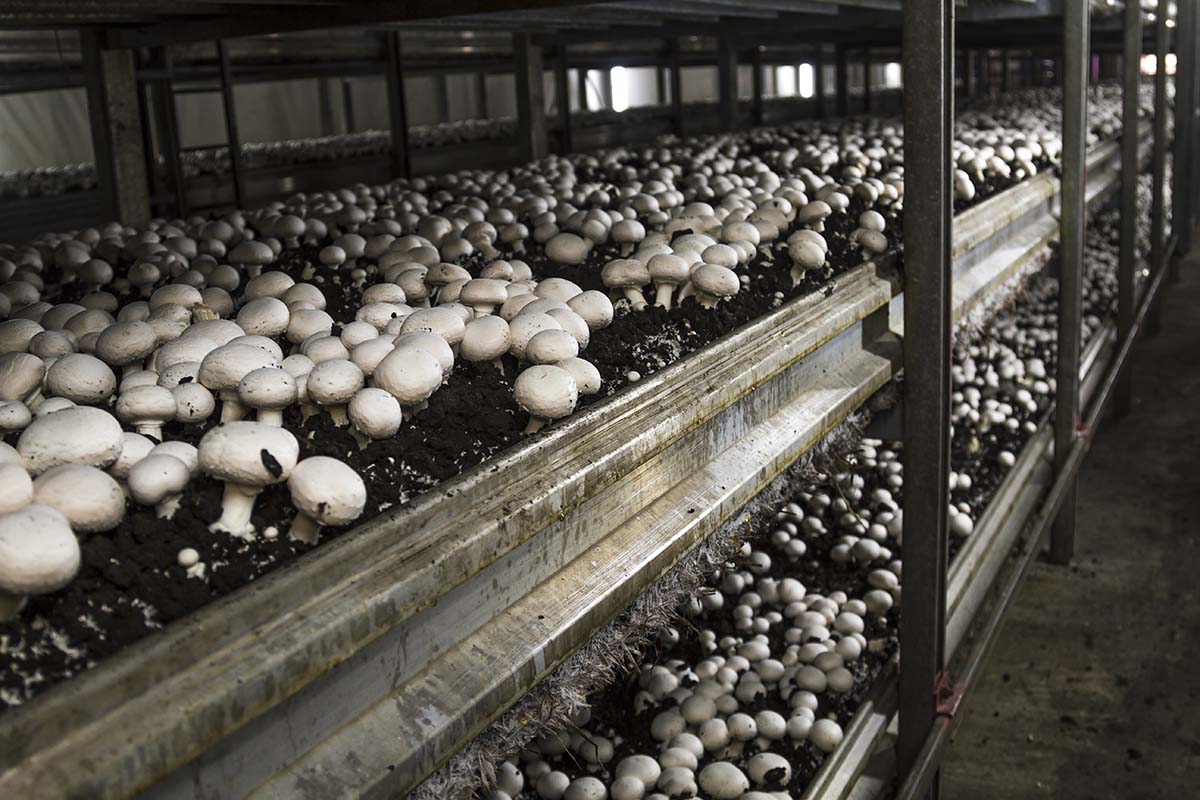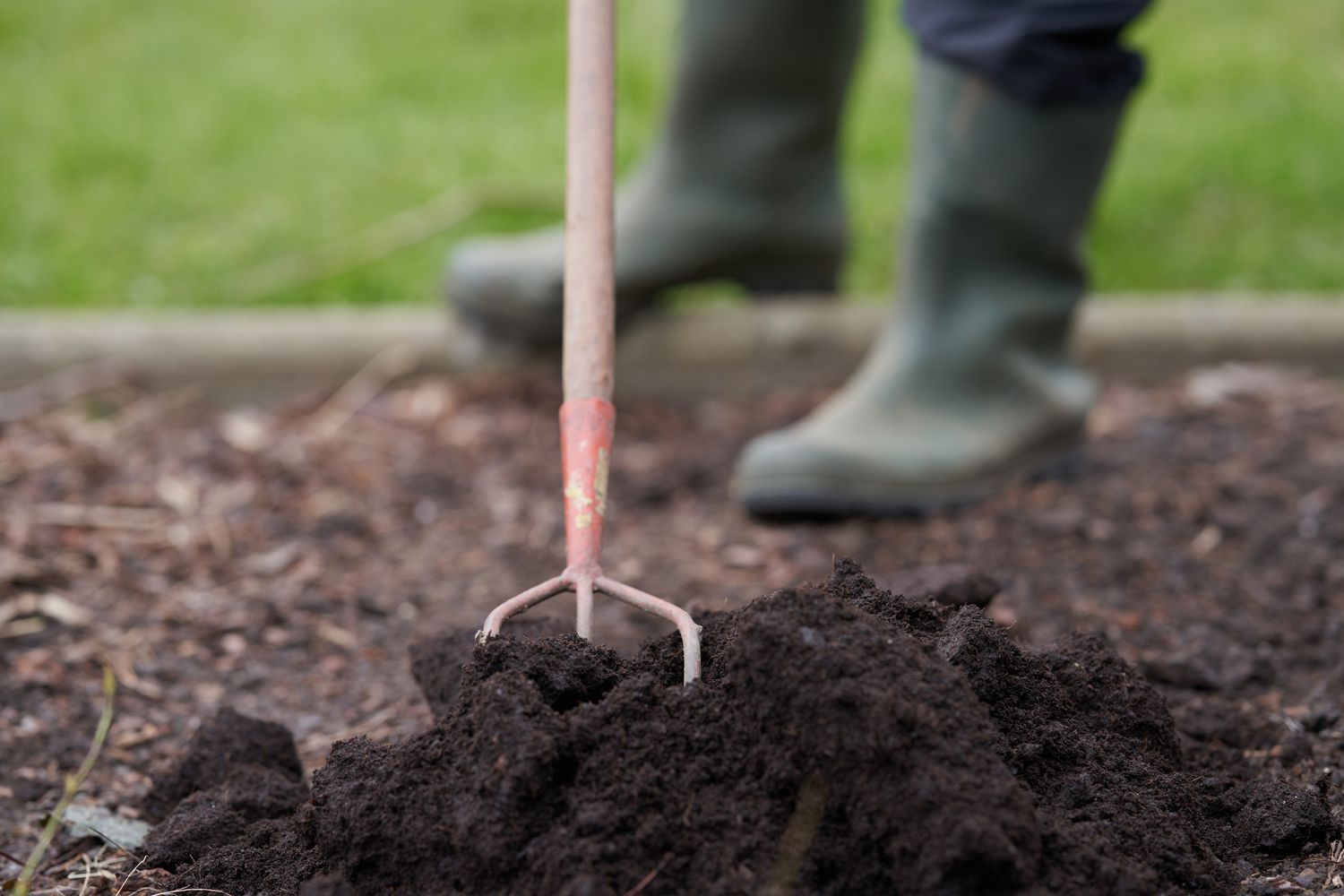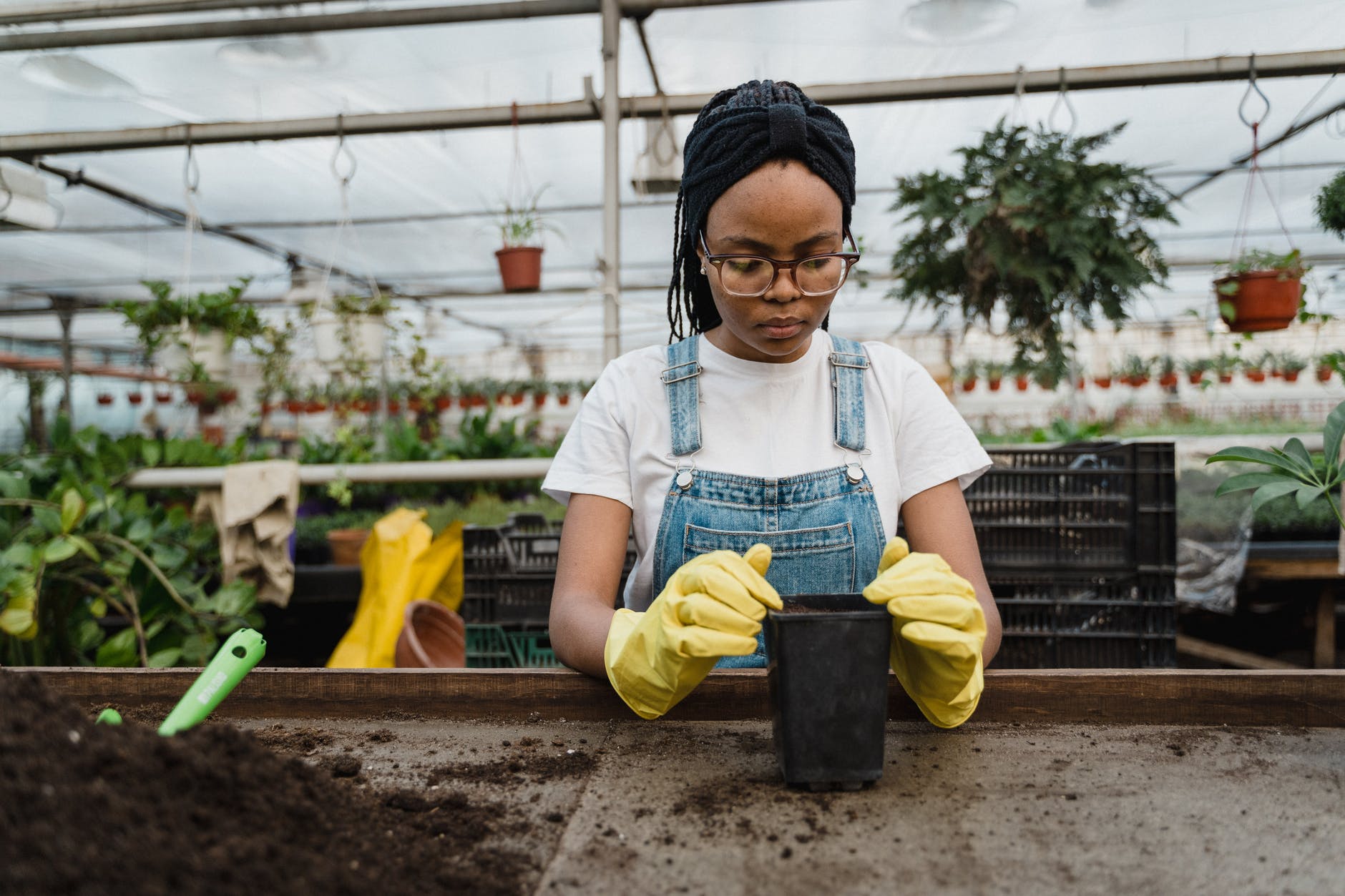Home>Types of Gardening>Edible Gardening>What Is Spawning In Mushroom Cultivation


Edible Gardening
What Is Spawning In Mushroom Cultivation
Published: January 25, 2024
Learn about the process of spawning in mushroom cultivation and its significance for edible gardening. Find out how to effectively implement this technique.
(Many of the links in this article redirect to a specific reviewed product. Your purchase of these products through affiliate links helps to generate commission for Chicagolandgardening.com, at no extra cost. Learn more)
Table of Contents
Introduction
The Fascinating World of Mushroom Spawning
Welcome to the captivating world of mushroom cultivation, where the process of spawning plays a pivotal role in the growth and development of these remarkable fungi. Whether you're a novice enthusiast or a seasoned gardener, understanding the intricacies of mushroom spawning is essential for successful cultivation. In this comprehensive guide, we will delve into the fundamentals of mushroom spawning, exploring the various types of spawn, the spawning process, suitable substrates, and the myriad benefits associated with this crucial stage of cultivation.
Mushroom cultivation has gained immense popularity in recent years, owing to the growing interest in sustainable and organic food production. With its rich history and diverse array of species, mushrooms offer a fascinating avenue for gardeners to explore. From the delectable flavors of gourmet mushrooms to the medicinal properties of certain varieties, the world of mushroom cultivation is as diverse as it is rewarding.
As we embark on this insightful journey into the realm of mushroom spawning, we will unravel the mysteries behind this essential stage of cultivation, shedding light on the techniques and practices that contribute to successful mushroom growth. Whether you aspire to cultivate mushrooms for culinary delight, medicinal purposes, or simply for the joy of nurturing these unique organisms, understanding the nuances of spawning is a crucial step towards achieving your goals. So, let's embark on this enlightening exploration of mushroom spawning and unlock the secrets to cultivating these extraordinary fungi.
The Basics of Mushroom Spawning
At the heart of mushroom cultivation lies the concept of spawning, a process that involves introducing mushroom mycelium to a suitable substrate to initiate the growth of mushrooms. Mycelium, the vegetative part of a fungus, serves as the foundation for mushroom development, and the spawning stage sets the groundwork for the subsequent growth phases. Understanding the basics of mushroom spawning is essential for anyone venturing into the world of mushroom cultivation.
One of the key components of mushroom spawning is the selection of a suitable spawn, which serves as the inoculum for the cultivation process. Spawn can consist of various materials, such as grain, sawdust, or liquid culture, each offering distinct advantages depending on the mushroom species and the desired cultivation method. The choice of spawn is crucial, as it directly impacts the success of the cultivation endeavor.
Moreover, the selection of a compatible substrate is integral to the spawning process. The substrate, which serves as the medium for mushroom growth, can range from organic materials like straw and wood chips to commercial mixtures specifically formulated for mushroom cultivation. The composition and preparation of the substrate play a significant role in providing the necessary nutrients and environment for mycelium colonization and subsequent fruiting.
Aspiring cultivators must also consider the environmental factors that influence the spawning process, including temperature, humidity, and ventilation. These parameters are critical for creating an optimal environment that supports mycelial growth and minimizes the risk of contamination, ultimately paving the way for a successful harvest.
By grasping the fundamental principles of mushroom spawning, cultivators can lay a solid foundation for their cultivation endeavors. This knowledge empowers enthusiasts to embark on their mushroom cultivation journey with confidence, knowing that they possess the essential understanding of the spawning process and its pivotal role in the growth and development of these extraordinary fungi.
Types of Spawn
When it comes to mushroom cultivation, the choice of spawn is a critical factor that significantly influences the success of the growing process. Several types of spawn are commonly used, each offering unique characteristics and suitability for specific cultivation methods. Understanding the different types of spawn is essential for cultivators seeking to optimize their mushroom cultivation endeavors.
One prevalent type of spawn is grain spawn, which involves inoculating sterilized grains, such as rye, millet, or wheat, with mushroom mycelium. Grain spawn is favored for its ease of production and versatility, making it suitable for a wide range of mushroom species. Its uniform texture and high nutrient content provide an ideal medium for mycelial growth, contributing to robust colonization and subsequent fruiting.
Another popular spawn variant is sawdust spawn, crafted by inoculating sterilized sawdust with mushroom mycelium. Sawdust spawn is particularly well-suited for wood-loving mushroom species, as the composition closely mimics their natural habitat. This type of spawn offers excellent aeration and moisture retention, fostering optimal conditions for mycelial proliferation and fruiting.
Furthermore, liquid culture spawn has gained traction for its efficiency and scalability in commercial mushroom cultivation. Liquid culture involves propagating mushroom mycelium in a nutrient-rich liquid medium, resulting in a highly concentrated inoculum that can be easily distributed across a variety of substrates. This type of spawn is prized for its rapid colonization and uniform distribution, making it an attractive option for large-scale cultivation operations.
Each type of spawn presents distinct advantages and considerations, and the choice of spawn ultimately depends on the specific requirements of the mushroom species being cultivated, as well as the scale and method of cultivation. By carefully evaluating the characteristics of different spawn types and their compatibility with the intended cultivation approach, cultivators can make informed decisions that lay the groundwork for successful mushroom cultivation.
The Spawning Process
The spawning process marks a crucial stage in mushroom cultivation, where the selected spawn is introduced to the chosen substrate to initiate mycelial colonization. This pivotal step sets the foundation for the subsequent growth and development of mushrooms, making it essential for cultivators to understand the intricacies of the spawning process.
Initially, the chosen substrate is prepared to create an environment conducive to mycelial growth. Depending on the type of substrate, this may involve sterilization or pasteurization to eliminate competing microorganisms and create a favorable medium for the mushroom mycelium. Once the substrate is prepared, it is mixed with the selected spawn, ensuring even distribution to facilitate uniform colonization.
Temperature and humidity play a critical role during the spawning process, as they directly impact mycelial growth and establishment. Maintaining optimal environmental conditions is essential for promoting rapid colonization while minimizing the risk of contamination. Proper ventilation and moisture levels are also crucial factors that contribute to the success of the spawning process.
After the spawn is introduced to the substrate, it undergoes a period of incubation during which the mycelium proliferates and permeates the substrate. This colonization phase is a vital precursor to the eventual fruiting of mushrooms and requires attentive monitoring to ensure the mycelium’s healthy development. Cultivators must exercise patience and diligence during this phase, as it lays the groundwork for a bountiful harvest.
As the mycelium spreads and consolidates within the substrate, the spawning process sets the stage for the subsequent fruiting phase, where mushrooms begin to emerge. This transition from mycelial colonization to fruiting is a testament to the successful completion of the spawning process, marking a significant milestone in the cultivation journey.
By comprehending the nuances of the spawning process and its pivotal role in mushroom cultivation, enthusiasts can navigate this stage with confidence, setting the stage for a rewarding harvest of delectable and nutritious mushrooms.
Spawning Substrates
The selection of a suitable spawning substrate is a critical determinant of success in mushroom cultivation, as it serves as the medium for mycelial colonization and subsequent fruiting. Cultivators must carefully consider various factors when choosing a spawning substrate, including its composition, preparation method, and compatibility with the targeted mushroom species. Understanding the intricacies of spawning substrates is essential for fostering optimal conditions for mycelial growth and achieving a fruitful harvest.
Organic materials such as straw, wood chips, and agricultural by-products are commonly used as spawning substrates due to their nutrient content and ability to support mycelial colonization. These substrates offer a rich source of carbohydrates and other essential nutrients that facilitate robust mycelial growth, laying the groundwork for healthy mushroom development.
Furthermore, the preparation of the spawning substrate plays a pivotal role in creating a conducive environment for mycelial colonization. Techniques such as pasteurization and sterilization are employed to eliminate competing microorganisms and pathogens, reducing the risk of contamination and providing the mushroom mycelium with a competitive edge during colonization.
Another consideration in selecting a spawning substrate is its moisture retention capacity and aeration properties. Adequate moisture levels are crucial for sustaining mycelial growth, while proper aeration ensures the circulation of oxygen, creating an optimal environment for the proliferation of mushroom mycelium. The balance of moisture and air is vital for supporting robust mycelial colonization and eventual fruiting.
Commercially formulated mushroom substrates are also available, offering a convenient and tailored option for cultivators. These substrates are meticulously crafted to provide an ideal balance of nutrients, moisture retention, and aeration, streamlining the cultivation process and optimizing the conditions for mycelial growth. While commercial substrates may incur additional costs, their consistency and reliability make them an attractive choice for both novice and experienced cultivators.
By understanding the nuances of spawning substrates and their impact on mycelial colonization, cultivators can make informed decisions that set the stage for successful mushroom cultivation. The careful selection and preparation of a spawning substrate contribute to the creation of an optimal environment for mycelial proliferation, ultimately culminating in a bountiful harvest of delectable mushrooms.
Benefits of Spawning
The process of spawning in mushroom cultivation offers a myriad of benefits that contribute to the successful growth and development of mushrooms. Understanding and harnessing these advantages is essential for cultivators seeking to optimize their cultivation endeavors and achieve a bountiful harvest of high-quality mushrooms.
One of the primary benefits of spawning lies in its role as a crucial stage in the cultivation process, setting the foundation for mycelial colonization and subsequent fruiting. By introducing the selected spawn to a suitable substrate, cultivators initiate the growth of mushroom mycelium, laying the groundwork for the eventual emergence of mushrooms. This pivotal step is instrumental in establishing the conditions necessary for robust mushroom development.
Moreover, the spawning process enables cultivators to exercise control over various factors that influence mycelial growth and fruiting. By carefully selecting the spawn and substrate, as well as managing environmental parameters such as temperature, humidity, and ventilation, cultivators can create an optimal environment that supports healthy mycelial colonization. This level of control contributes to the overall success and productivity of the cultivation endeavor.
Spawning also facilitates the efficient utilization of resources, as it allows cultivators to propagate mushroom mycelium and expand their cultivation operations. Through the production of spawn and the colonization of substrates, cultivators can effectively multiply their initial inoculum, paving the way for larger harvests and sustained cultivation efforts. This scalability is particularly advantageous for commercial mushroom growers seeking to meet market demands.
Furthermore, the spawning process contributes to the diversification of mushroom varieties and cultivation methods. Different types of spawn and substrates offer cultivators the flexibility to experiment with various mushroom species and growing techniques, expanding the range of mushrooms that can be successfully cultivated. This diversity not only enriches the cultivation experience but also opens doors to new market opportunities and culinary delights.
By leveraging the benefits of spawning, cultivators can harness the potential of mushroom cultivation to its fullest, reaping the rewards of a sustainable, rewarding, and potentially lucrative endeavor. The careful orchestration of the spawning process empowers cultivators to nurture and harvest an abundant array of mushrooms, enriching their culinary experiences and contributing to the thriving world of mushroom cultivation.
Conclusion
Embarking on the journey of mushroom cultivation unveils a world of wonder, where the process of spawning plays a pivotal role in nurturing the growth and development of these extraordinary fungi. Through the exploration of the basics of mushroom spawning, the diverse types of spawn, the intricacies of the spawning process, and the significance of spawning substrates, cultivators gain valuable insights that pave the way for successful cultivation endeavors.
As cultivators immerse themselves in the art of mushroom spawning, they discover the profound impact of this essential stage on the entire cultivation process. From selecting the most suitable spawn to meticulously preparing the spawning substrate, every facet of the spawning journey contributes to the creation of an optimal environment for mycelial colonization and eventual fruiting.
The benefits of spawning resonate throughout the cultivation experience, offering cultivators a wealth of advantages that enhance productivity, diversity, and control. By harnessing these benefits, cultivators unlock the potential of mushroom cultivation, nurturing a rewarding and sustainable practice that yields an abundant harvest of delectable and nutritious mushrooms.
As we conclude this enlightening exploration of mushroom spawning, enthusiasts and aspiring cultivators are equipped with the knowledge and understanding to embark on their own mushroom cultivation journeys with confidence. The art of spawning, with its intricate processes and bountiful rewards, invites cultivators to immerse themselves in the enchanting world of mushroom cultivation, where each stage unfolds a tapestry of growth, discovery, and culinary delight.
With a newfound appreciation for the significance of spawning in mushroom cultivation, enthusiasts are poised to nurture and harvest a diverse array of mushrooms, enriching their culinary experiences and contributing to the thriving tapestry of the mushroom cultivation landscape.





